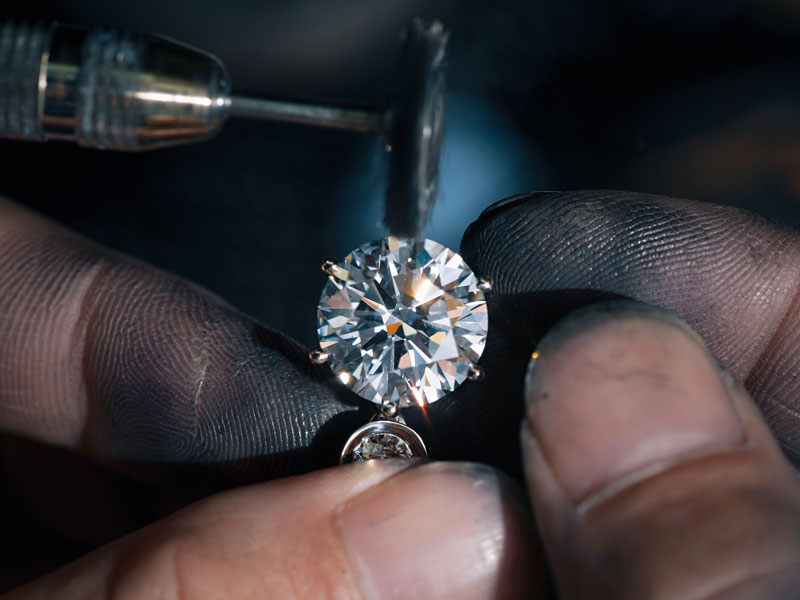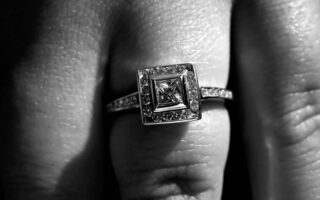When looking for your next great accessory, you might want to consider diamond jewelry. Diamond jewelry is essential for any wardrobe; you can wear a gorgeous diamond necklace to pair with an outfit for a formal event, or you can wear a pair of diamond earrings and rings to add a bit of sparkle to a work outfit. You might even be buying a diamond ring for a marriage proposal or to celebrate an important relationship milestone.
Whatever form of diamond jewelry that you’re looking for, you’re going to want to consider the type of diamonds utilized within the jewelry. The two main types of diamonds used in jewelry are lab-grown diamonds and mined diamonds, derived from mining. Lab-grown diamonds are considered to be a more sustainable form of diamonds as they make less of an impact on the environment than diamond mining does. If you’re interested in getting diamond jewelry that’s made in a more ethical way, you’ll want to learn more about lab-grown diamonds.
Table of Contents
Lab-Grown Diamonds vs. Mined Diamonds: What’s the Difference?
While the Federal Trade Commission considers lab-grown diamonds and mined diamonds to have the same level of quality, they can be distinguished by their formation and harvesting processes.
Mined Diamonds
Mined diamonds are formed when carbon deposits located deep within the Earth are subjected to high amounts of pressure and heat. mined diamonds can take approximately one to three billion years to form, which is about 25 to 75% of the Earth’s age. As such, there are a finite amount of mined diamonds in existence. In order to harvest mined diamonds, they must be mined from the earth. Unfortunately, the mining process can have negative effects on the environment, including deforestation, the burning of fossil fuels, excess carbon emissions, and pollution. While mined diamonds are gorgeous, their sustainability is debatable.
Lab-Grown Diamonds
Lab-grown diamonds take considerably less time to form than mined diamonds do, approximately a month depending on how many carats that the diamond is. Lab-grown diamonds are created through two different processes:
The HPHT Method
Some foundries that create lab-grown diamonds utilize the HPHT method, which stands for high pressure, high temperature. In order to create a lab-grown diamond via HPHT, a diamond seed is placed into pure carbon, and then exposed to extreme levels of heat and pressure. Once formed, a rough HPHT lab-grown diamond will resemble a complex cuboctahedron until it is cut and shaped to the jewelry maker’s liking. While it impacts the environment less than traditional diamond mining, the HPHT method requires a large amount of energy consumption, which is something to note if you want to be conscious of sustainability.
The CVD Method
The CVD method, also known as Chemical Vapor Deposition, is a way to create lab-grown diamonds that’s more economical and environmentally friendly. In order to create lab-grown diamonds via CVD, a diamond seed is placed in a vacuum sealed chamber that converts carbon gasses into plasma. Carbon atoms in the chamber then build on top of the existing diamond seed and form a fully-grown rough diamond that resembles a cube shape. Some foundries reduce their environmental impact even further by hydropowering their CVD processes, utilizing water as their main energy source. In terms of environmental ethics and sustainability, CVD lab-grown diamonds are the way to go.
Lab-Grown Diamond Pricing
Lab diamond engagement rings UK tend to be priced slightly lower than mined diamonds due to supply and demand. While there’s no difference between lab-grown diamonds and mined diamonds in terms of quality, mined diamonds cost more because there are less of them available.
Lab-Grown Diamond Jewelry
Lab-grown diamonds can be placed into all of the same types of jewelry that mined diamonds can be. Some of the most popular forms of lab-grown diamond jewelry include:
Engagement Rings
Lab-grown diamond engagement rings are incredibly popular and come in a variety of different shapes and styles. They’re also available in a variety of different carat sizes, so you can decide how big of a diamond you’d like.
Necklaces
Lab-grown diamonds are a favorite in solitaire necklaces and pendants. There are also a number of statement necklaces, like tennis necklaces and medallions that include lab-grown diamonds and are a perfect accessory for any wardrobe.
Earrings
Lab-grown diamond earrings come in a variety of styles and carat sizes. Depending on your personal style, you might opt for something more understated, like a simple pair of studs. Or, you could choose a pair of dazzling dangling earrings to really make things sparkle.
Conclusion
Lab-grown diamonds are a wonderful alternative to mined diamonds for sustainable jewelry pieces that are made in a more environmentally ethical way. Search for engagement rings, necklaces, and earrings made with lab-grown diamonds for stylish accessories that you can feel good about wearing. What types of lab-grown diamond jewelry do you most love to wear?



